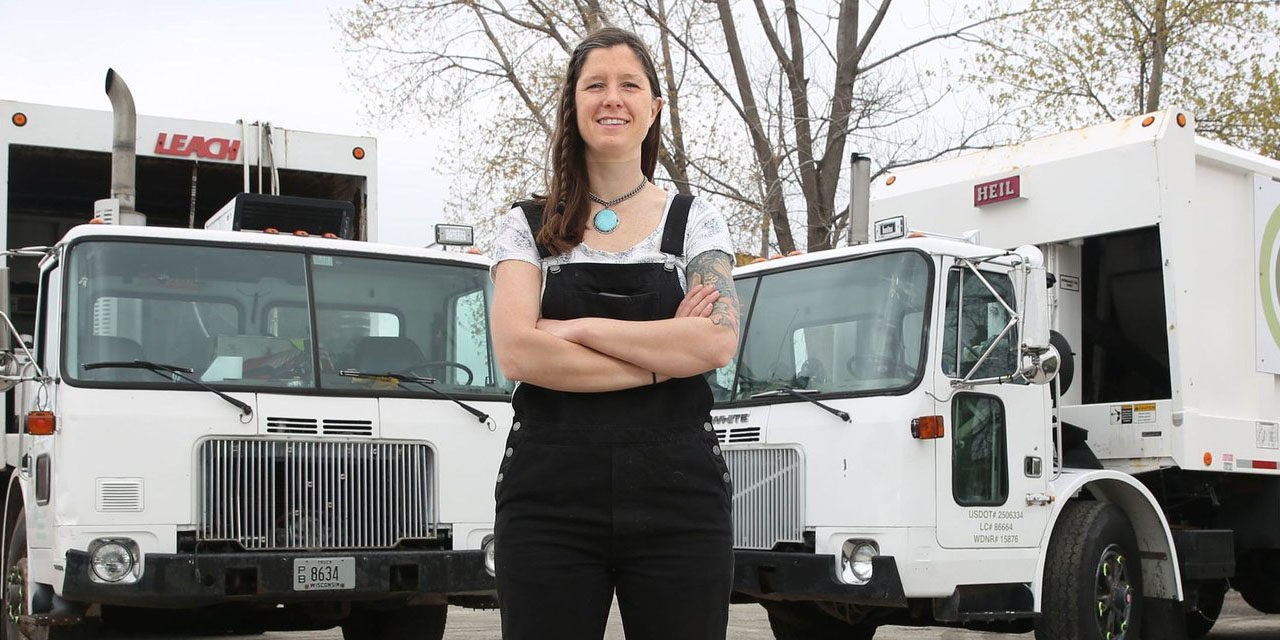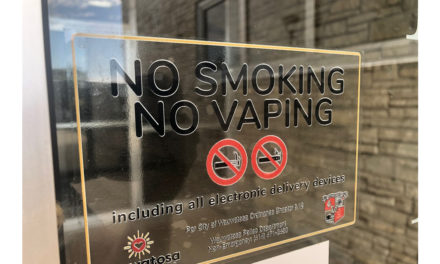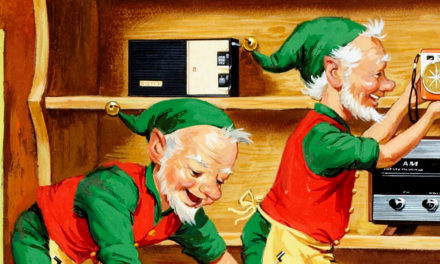By Jenny Wisniewski
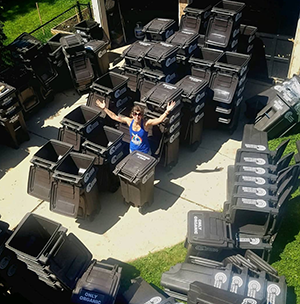 When a semi-trailer truck pulled up in front of Heather Kuhl’s East Tosa home to deliver 200 compost receptacles, Kuhl knew she was in deep.
When a semi-trailer truck pulled up in front of Heather Kuhl’s East Tosa home to deliver 200 compost receptacles, Kuhl knew she was in deep.
Having spearheaded the composting pilot program in Wauwatosa, the expected delivery was in the public service yard. When the delivery was delayed again and again, an exasperated Kuhl finally had the delivery come straight to her door on a weekend.
A few months earlier nearly 200 Wauwatosa households volunteered to participate in the program which included paying a subsidized price for the receptacle. With carts lined up and down her driveway and filling her backyard, Kuhl and her husband assembled the carts and arranged for pick up with the program’s participants.
These are the same carts residents may have noticed around the east side of Tosa – similar to city garbage receptacles in shape but smaller in size with the name Compost Crusaders printed across each side.
The residents separate all organic food waste from their garbage, dump the waste in the receptacle and wheel it to the curb once per week (once every two weeks in the winter) for pick up. Just as most of us do with our garbage, it is easy to wipe our hands, go on with our day and forget about what happens next.
Melissa Tashjian, the founder of Compost Crusaders, is one of those people who doesn’t forget. She has built her livelihood around hauling other people’s waste. Here’s how it works. Tashjian, who refers to herself as a hauler, owns four trucks that she and several employees drive daily to pick up compost from municipalities, schools, businesses and restaurants.
Most of the compost is delivered to Caledonia, home of Blue Ribbon Organics, where it is turned into healthy, fertile soil products. Customers can then buy the finished product from Blue Ribbon to use for landscaping, food production, and residential gardens.
In the case of the Wauwatosa pilot program, the processing site is unique. Because the City of Wauwatosa was already contracting with Blue Ribbon to compost leaves and yard waste in the city yard, the city agreed to also accept compost material picked up by Compost Crusaders in Wauwatosa. This is significant as it cuts down on cost and energy use due to travel.
Blue Ribbon processes the organic material, a procedure that takes six to eight months. The company then moves it off-site, selling the finished product to consumers. Because Blue Ribbon is certified organic, this includes food producers.
To date, the pilot program, which began in July 2019, has diverted 17,000 pounds of food waste from the landfill. The program will continue for a year and be evaluated to determine what year two will look like.
The desire to begin a city composting program originated from several different points in Wauwatosa, two of them Kuhl’s aldermanic district and McKinley Elementary School.
Residents Request Composting
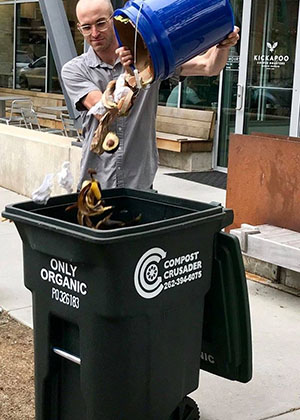 While campaigning door to door for a Tosa alder position in 2018, Kuhl heard from neighbors who wanted a composting program. Hooked, she included it in her platform. Following her election, she decided it might move quicker to spearhead the effort on her own rather than through the city.
While campaigning door to door for a Tosa alder position in 2018, Kuhl heard from neighbors who wanted a composting program. Hooked, she included it in her platform. Following her election, she decided it might move quicker to spearhead the effort on her own rather than through the city.
Citizen Kuhl decided to seek sponsors. She was gratified when several local businesses stepped forward. They include Wauwatosa Physical Therapy, Outpost Natural Foods, Be Spectacled, Milwaukee Regional Medical Complex, Team Rehab and MacGillis and Wiemer Law Offices. The $5,000 raised was used to offset the cost of the carts; program participants paid a reduced cost of $25. (Residents also pay a monthly fee of $13 for compost pick up.)
It wasn’t a tough sell to find 200 households to participate in the program. These are residents who embrace the push towards composting and value its benefits – the enrichment of the soil, decrease in the use of fertilizers, and landfill diversion.
When asked if the program could eventually lead to a city-wide program, Kuhl took a long pause. It would be more efficient to have a city contract, she said. The city could also benefit economically. While it costs the city $50 per ton for landfill, the price for compost is much lower.
Kuhl didn’t sidestep the hurdles. A large number of recyclables are contaminated each year when nonrecyclables are tossed in the mix. Would the same happen with compost, she wondered. “It winds up costing the city money if you do it wrong,” Kuhl said.
It would also require buy-in from residents citywide. In the program’s earliest stages, residents were invited to participate in an online survey to gauge interest in the program. News of the initiative also made its rounds on social media. One concern that came up repeatedly was a potential increase in a certain species of scavenger – whose name will go unmentioned. (Long, stringy tail and rhymes with cat)
Kuhl disagrees. The compost bins are made of the same materials as the city garbage bins, she said. “Putting compost in one bin versus another is not going to increase rodent activity,” she said.
Kids Lead the Way
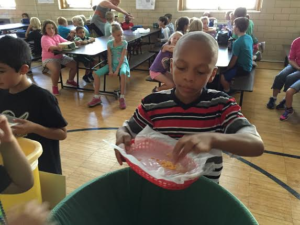 While Kuhl was still hatching her plan, a group of kids across town were already demonstrating how this composting thing is done and their parents wanted to get in on the act. A trip for anyone to a school cafeteria would confirm what most of us already know – kids are finicky eaters. The garbage bins overflow with waste. Students and teachers at McKinley Elementary School decided to act.
While Kuhl was still hatching her plan, a group of kids across town were already demonstrating how this composting thing is done and their parents wanted to get in on the act. A trip for anyone to a school cafeteria would confirm what most of us already know – kids are finicky eaters. The garbage bins overflow with waste. Students and teachers at McKinley Elementary School decided to act.
Two staff members, art teacher Jenny Leigh and orchestra teacher Elizabeth Daily spearheaded a school composting program. After securing the funding to make it happen through school fundraising events and school and Parent Teacher Organization contributions, they next needed to face their biggest hurdle – instituting change.
“Humans are not necessarily embracing of change,” Leigh said. The initiation of the program required educating people that it wasn’t going to create an odor or draw rodents. (It hasn’t, according to Leigh.)
By the fall of 2015, the project was underway with bins set up in the cafeteria to gather all food waste. The successful effort later spread into the classrooms where students discard food waste from snacks and birthday parties. The students were involved every step of the way. Leigh says one of the biggest benefits that came from the initiative was that it “empowered the students.”
The program was so effective that in its first year, McKinley diverted 10,000 pounds of organic waste from the landfill. A sustainability leader in the community, McKinley influenced other schools to join in the effort. Today five other district schools have “green teams” that have begun composting programs. People from outside of the community took notice too. McKinley Elementary was the proud recipient of the 2017 Wisconsin DNR Recycling Excellence Award.
Compost Crusader’s Tashjian cites the McKinley families as part of the impetus behind the pilot program. “When the kids come home talking about the program, it generates interest with the parents,” she said.
Citizens Seek Sustainability Solutions
 Chuck Rohrer is the chairperson of the newly anointed Wauwatosa Sustainability Committee, a group of eight Wauwatosa residents and one common council liaison, Heather Kuhl. The group’s mission is “to champion environmentally sound practices fostering the city’s long-term livability and economic vitality.”
Chuck Rohrer is the chairperson of the newly anointed Wauwatosa Sustainability Committee, a group of eight Wauwatosa residents and one common council liaison, Heather Kuhl. The group’s mission is “to champion environmentally sound practices fostering the city’s long-term livability and economic vitality.”
One of the group’s efforts has been to increase the city’s landfill diversion rate by increasing recycling. For example, the group encouraged the city to put recycling bins next to waste bins in city parks and buildings. While the rate had been sitting at a 30% diversion rate, last year, it increased to 35%. “Composting is a natural add-on to that,” Rohrer said.
What’s Next?
Whether the pilot program will expand beyond its initial footprint is yet to be determined. It would require adaptability from community members and a feasible financial model. Though the 200 Tosans who currently participate in the program have taken an important first step, Tashjian believes that for the program to become a city-wide effort, the “end market” needs to be determined first.
“People are interested in the diverting process more than the finished product,” she said.
Currently, Tashjian sees a bottleneck in the market: a producer such as Blue Ribbon Organics is permitted by the state to only accept as much raw material as they can sell. They are unable to sell the product fast enough.
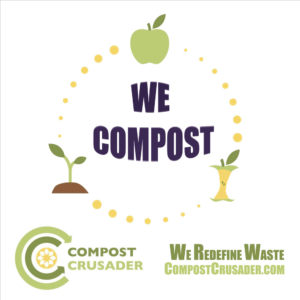 People such as Tashjian and Kuhl are working to change that. An employee of Compost Crusader recently sat down with Robin Vos, speaker of the Wisconsin State Assembly to pitch the idea of using the compost statewide for Department of Transportation (DOT) projects.
People such as Tashjian and Kuhl are working to change that. An employee of Compost Crusader recently sat down with Robin Vos, speaker of the Wisconsin State Assembly to pitch the idea of using the compost statewide for Department of Transportation (DOT) projects.
The compost material could potentially be used for soil erosion control and stormwater retention on state highways. Though Vos was receptive, it would need to be cost-effective in order for the state to move on the idea, Tashjian said.
The concept is not without precedent. In our neighboring state of Illinois, any state agency with a construction project located within 20 miles of a compost facility is required to request a bid for compost-amended soil. The Illinois DOT is also conducting two pilot projects using compost material to determine long-term cost savings as well as advantages and disadvantages.
Whether the expansion of the composting program makes financial sense to the city, Compost Crusaders and Blue Ribbon Organics remains to be seen. However, the experience of McKinley Elementary gives people like Kuhl hope.
Throughout the first year of its program, the McKinley green team collected data and used it to convince the district of the financial savings that composting brings. As a result, the school district now financially supports any school that wants to begin its own composting program. Sometimes it is the children who generate the most innovative of ideas. It is fitting. As Kuhl said, “They are the generation who are going to need to pick up the pieces.”

